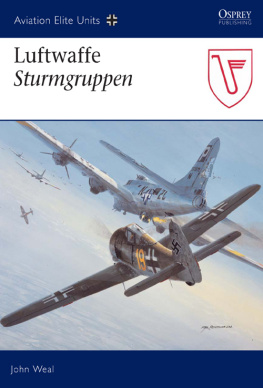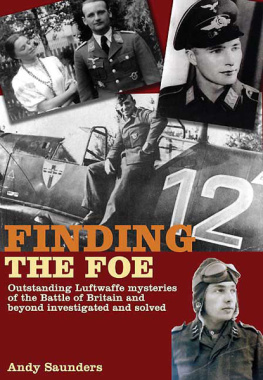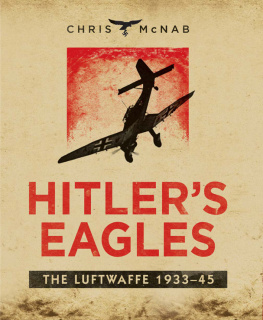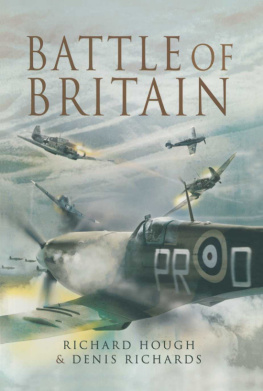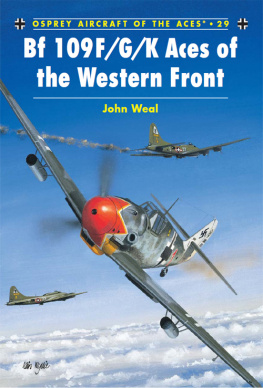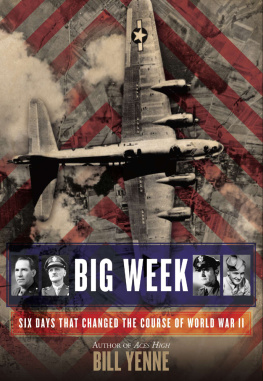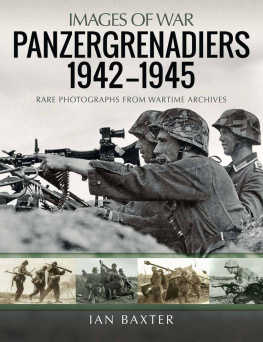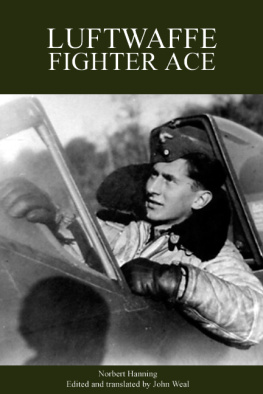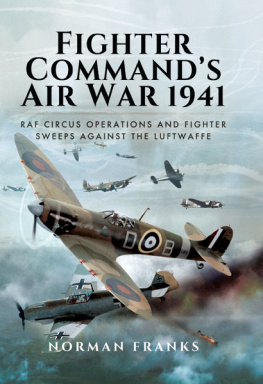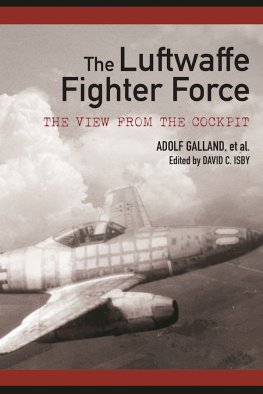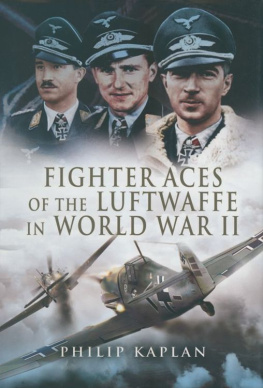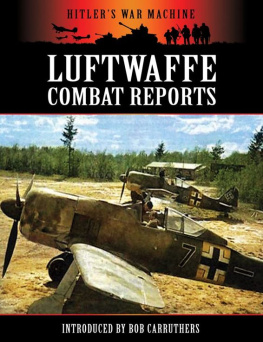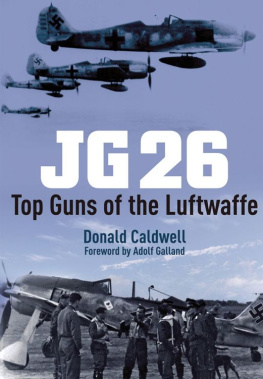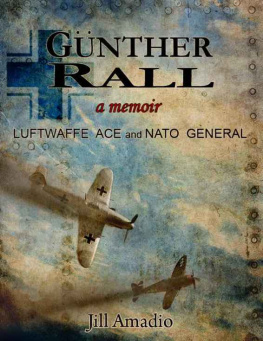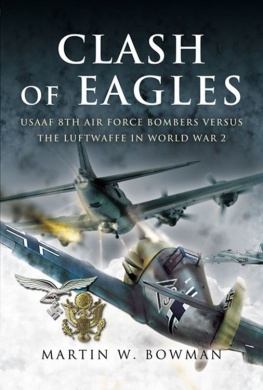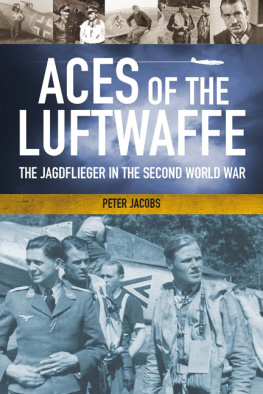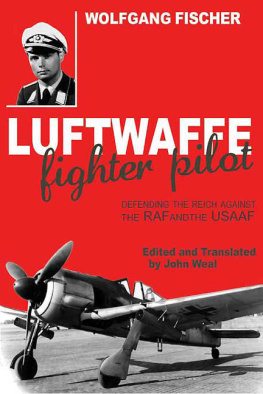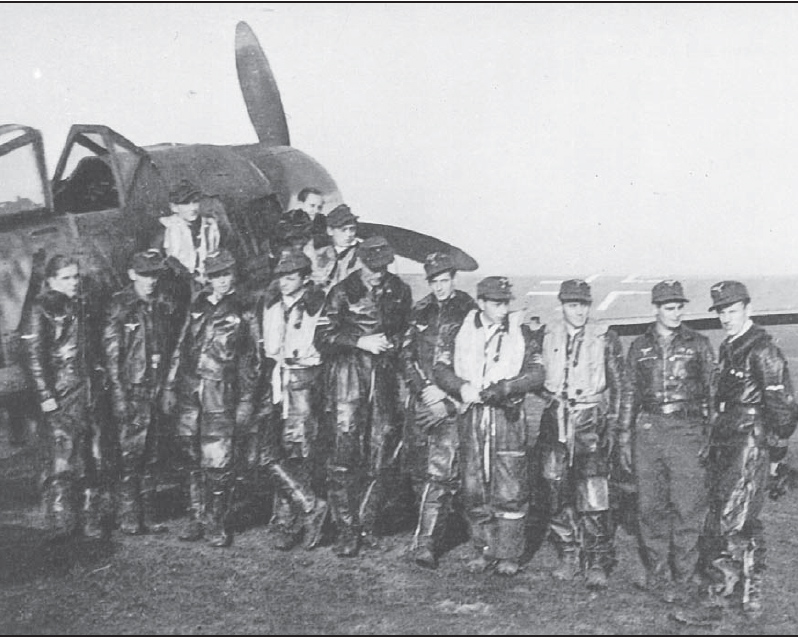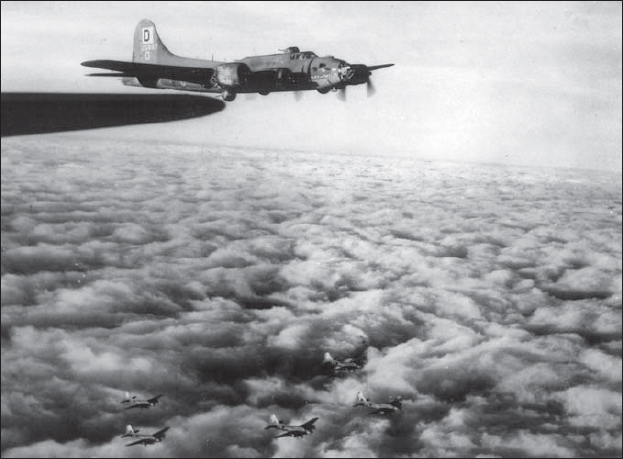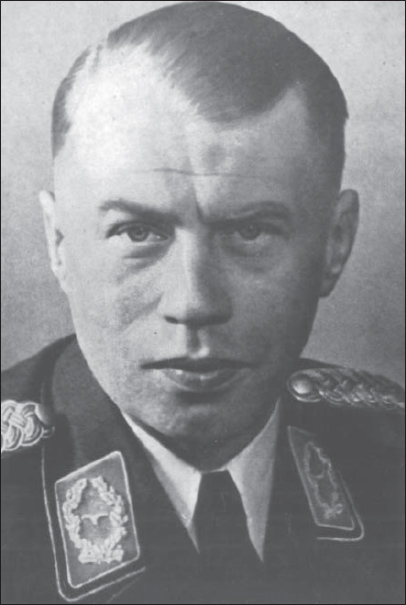Aviation Elite Units 20
Luftwaffe Sturmgruppen
John Weal
Series editor Tony Holmes
CONTENTS
CHAPTER ONE
STURMSTAFFEL 1 TRIAL BY FIRE
I have volunteered for the Sturmstaffel of my own free will. I fully understand the fundamental principles of the Staffel.
1. All attacks will, without exception, be carried out in formation and to within the closest possible range of the enemy.
2. Losses suffered during the approach will be compensated for by immediately closing up on the formation leader.
3. The enemy under attack is to be shot down from the shortest range possible or, if this is unsuccessful, destroyed by ramming.
4. The Sturm pilot will remain in contact with the stricken enemy until the point of impact with the ground has been established.
I voluntarily accept the obligation to abide by these principles, and will not return to base without having destroyed my enemy. Should I violate these principles, I am prepared to face court martial or dismissal from the Staffel.
When the first dozen or so volunteer pilots put their signatures to this extraordinary document on 17 November 1943, they were opening a new chapter in the long-running story of the daylight defence of Hitlers Reich.
That story had begun more than four years earlier with the first tentative attacks across the North Sea by machines of RAF Bomber Command. These initial incursions had been given short shrift by the Luftwaffes fighter defences. Of the 34 Wellingtons despatched against naval targets on the two raids of 14 and 18 December 1939, exactly half had been shot down and this without their even penetrating the German mainland (see Osprey Aircraft of the Aces 11 Bf 109D/E Aces 193941 for further details)! Little wonder, therefore, that the British quickly reconsidered their strategic policy and henceforth restricted the RAFs bombing campaign against Germany primarily to the hours of darkness.
It was Americas entry into the war two years later which rekindled the spark of daylight bombing. Confident in the power of their four-engined B-17 Flying Fortresses and B-24 Liberators, and of their reputed ability to place a bomb in a pickle barrel, the USAAF was wholly committed to daylight precision bombing. The Americans resisted all attempts to persuade them to add their numbers to the loose streams of RAF bombers now raiding Germany almost nightly. They would instead adhere rigidly to their tight daylight formations.
In time, these two diametrically opposed national policies would combine to form the round-the-clock bombing offensive, the British by night and the Americans by day. But this was still a long way off. It was a good six months after the Japanese attack on Pearl Harbor on the morning of 7 December 1941 that the first USAAF bomber crews were sent across the English Channel in borrowed RAF twin-engined Douglas Bostons to attack targets in occupied Europe; and it was another six months before the first USAAF four-engined heavies dropped their bombs on Germany proper.
The target of the Americans historic daylight raid of 27 January 1943 was the North Sea naval port of Wilhelmshaven protected by the same hornets nest of defending fighters that had mauled the RAFs Wellingtons so savagely back in December 1939. This time only one of the 55-strong attacking force of B-17s was brought down (although 32 more suffered damage to varying degrees).
It seemed at first as if the USAAFs faith in the ability of compact bomber formations to protect themselves against fighter attack had been fully vindicated. It was not until the Fortresses and Liberators started to venture deeper into Germanys heartland, beyond the range of the escort fighters then available, that their losses began to assume alarming proportions. These culminated in the twin attacks on Schweinfurt and Regensburg on 17 August 1943, when no fewer than 60 B-17s were brought down and nearly three times that number damaged.
The Eighth Air Force paid heavily for its early unescorted raids deep into Germany. The 100th BGs B-17F ALICE FROM DALLAS was just one of 60 Flying Fortresses lost on the Schweinfurt-Regensburg mission of 17 August 1943
A second strike against Schweinfurt less than two months later cost another 60 Fortresses, plus a further 145 damaged. Casualty rates such as these approaching 25 per cent meant that the daylight battle for the Reich still hung very much in the balance. The Luftwaffes fighter and flak defences were demonstrating that, deep inside German airspace, US heavies were almost as vulnerable as Bomber Commands twin-engined types had been when attacking the outer edges of Hitlers domain four years previously.
But while Dr Josef Goebbels propaganda ministry was gleefully trumpeting the news of each success in the air, cooler and more professional minds could already appreciate the inherent danger posed by the Eighth Air Forces steadily growing strength. Even before second Schweinfurt, one relatively junior Luftwaffe officer realised, with remarkable prescience, that the Americans inexorable build-up of power had to be disrupted before it became overwhelming and that such disruption could only be achieved by radical measures.
KORNATZKI - STURM VISIONARY
The son of an army general, Hans-Gnter von Kornatzki had been born in Liegnitz, Lower Silesia, on 22 June 1906. He joined the Reichswehr (inter-war German army) aged 21, and subsequently volunteered for flying training. Graduating from the Jagdschule Werneuchen in the spring of 1934, his first posting was as adjutant to I./JG 132 the premier, and, at that time, only Jagdgruppe in the then still covert Luftwaffe. The following year Oberleutnant von Kornatzki was transferred to the newly forming II./JG 132. Promoted to hauptmann in 1936, he was given command of one of five ad hoc ground-attack units set up at the time of the Munich crisis (see Osprey Elite Units 13Luftwaffe Schlachtgruppen).
The man who saw the writing on the wall, Major Hans-Gnter von Kornatzki was the Father of the Sturm Idea
Although the outbreak of war found Hauptmann von Kornatzki tasked with establishing new Bf 109-equipped Jagdgruppe II./JG 52 (see Osprey Elite Units 15 - Jagdgeschwader 52 for further details), it was only a matter of weeks before he took up the first of a series of staff appointments. These would ultimately lead to his joining the staff of the General der Jagdflieger, Generalmajor Adolf Galland, on 24 September 1943.
By now having himself risen to the rank of major, von Kornatzki knew Galland of old, and lost little time in outlining his revolutionary proposals to the General der Jagdflieger. He conceded that Luftwaffe fighter units presently operating in the defence of the Reich were exacting a steady, and at times enormous, toll on the US heavies. But what was really needed, he argued, was one major blow, or a series of major blows, designed to knock whole bomber formations out of the sky. Kornatzki believed that the Americans would be unable to ignore such losses, thus placing their entire daylight bombing strategy in jeopardy.

